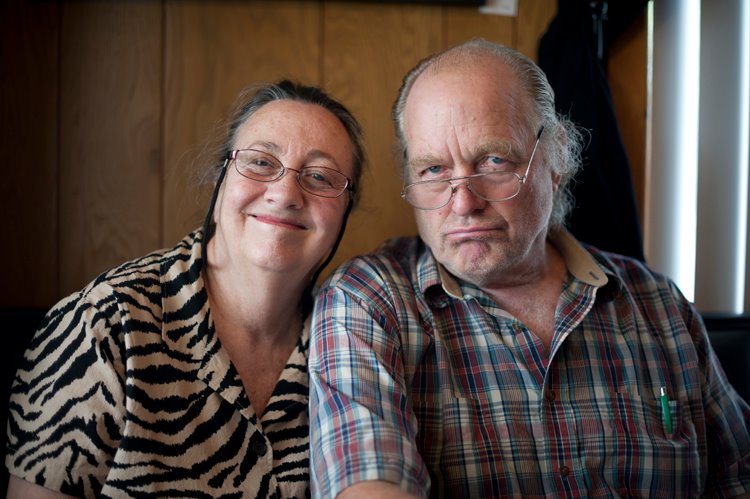It’s funny … when you’re peeling potatoes for frying, you don’t have to peel them all: just the green and the rotten, the stems and sprouts, and then use a brush on the rest. It’s way too easy for the olders of us to criticize the youngers: when Elan was displaying his considerable, admirable, Zen Center kitchen chopping skills, my response was: “Why didn’t you cut all the pieces the same size?”
It took me all these years to discover the advantage of first cutting the tater in half the longest possible way. Formerly, out of an unnatural respect for the product, I’d just trim one side flat, to get it to sit right on the board. I cut ‘em first in half, then in strips, being careful to keep them from clinging to the knife. Then cross-ways, creating these little tater towers, ending up with pieces which are all approximately the same size. The thicker or longer ones I end up cutting thinner the other way.
Another of my considerable tater skills is, when shuffling the pieces off the cutting board into a plastic bowl: these days, very few of the chunks end up on the floor.
A tempered, well-oiled skillet is essential for high-temperature tater-frying. While I scrape it down good with ye olde spatula, I imagine a microscopic view of the surface, smoothing out the iron ridges and valleys, before pouring in tons of canola oil. Temp on high, taters in, lid on, ten or fifteen minutes away from done, with frequent scraping and turning.
Catsup jar turned over and back, eggs warming along the back of the cutting board; toast in, butter lid off, jelly jar open, ready to go. The German town of Uelzen passed an ordinance that jelly can be sold in nothing larger than eight ounce jars, in an effort to keep the jam from traveling up the knife.

